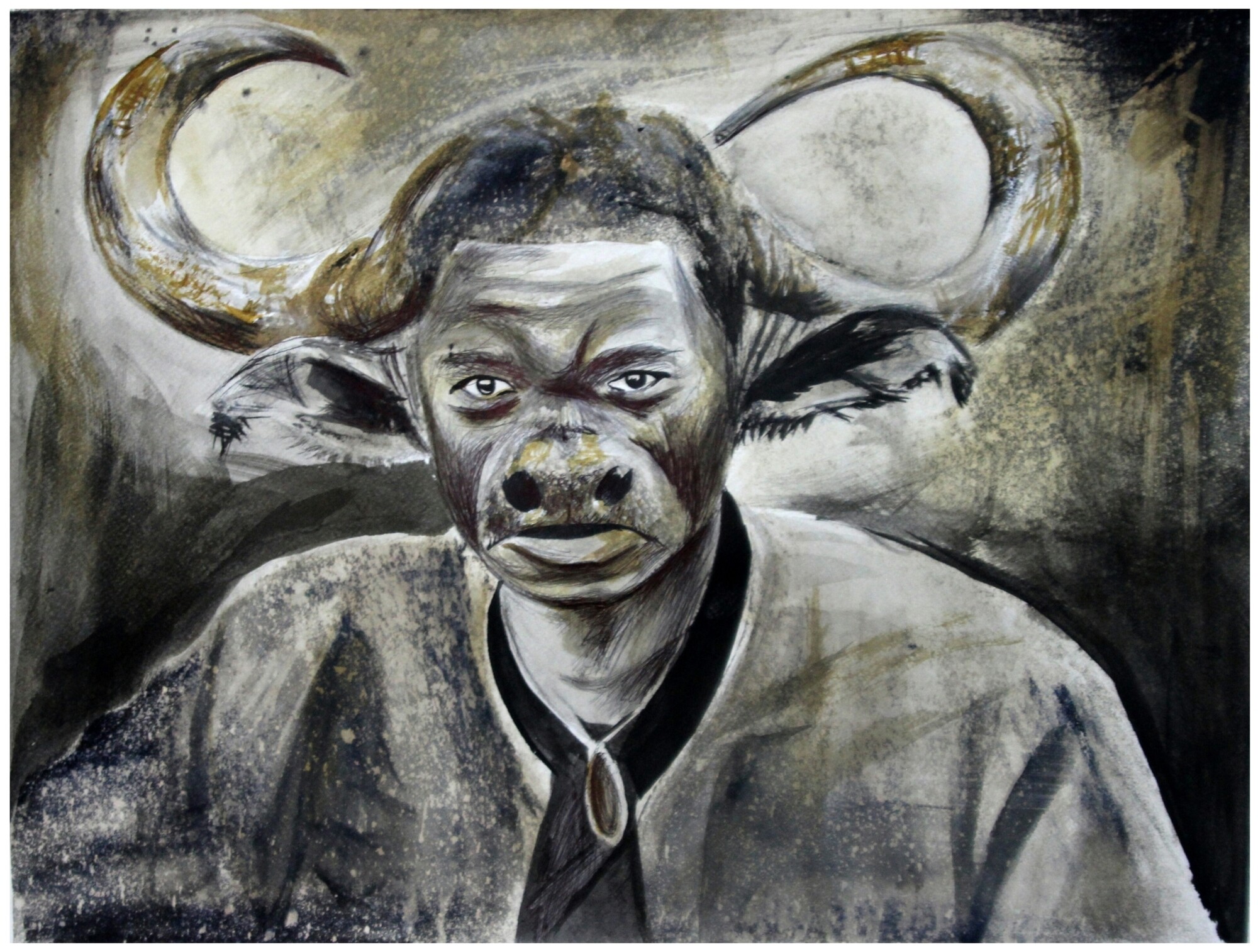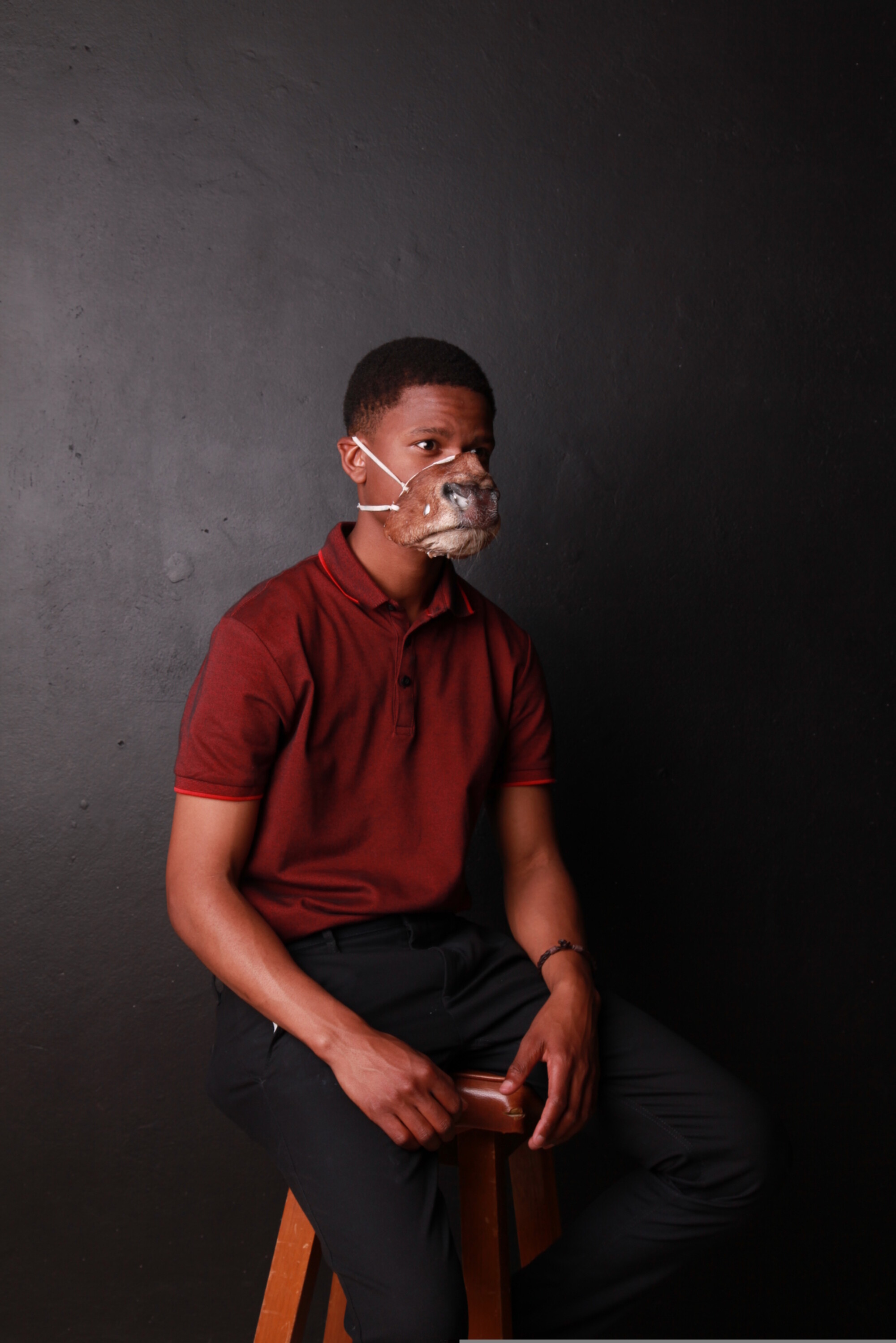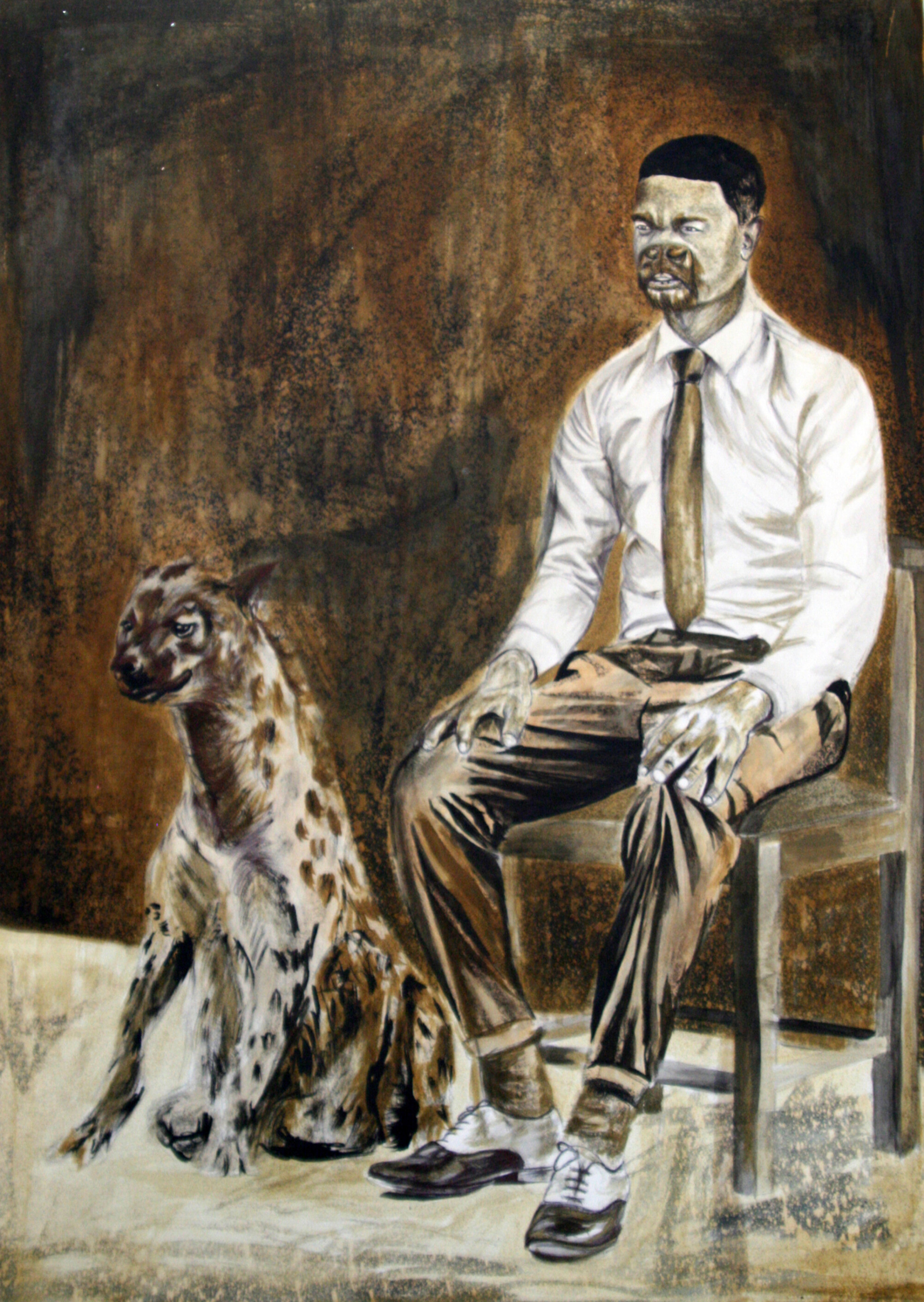Intergenerational conversations for South Africa: new donation to the Constitutional Court Art Collection
PRESS RELEASE / 24 September 2020 / Heritage Day

Richard “Specs” Ndimande, Conversations III, 2018, ink and pen on paper, 420 x 540 mm. Constitutional Court Art Collection.
STACEY VORSTER, former curator of the Constitutional Court Art Collection (CCAC), Constitutional Court Artworks Committee member and PhD researcher at the University of Amsterdam, writes about the CCAC’s recent acquisition of three artworks by Richard “Specs” Ndimande (1994—).
Two weeks before the first post-apartheid elections in April 1994, Richard “Specs” Ndimande was born into a vastly different world to that of his parents. He joined a generation often glibly collectivised as “born-frees” and characterised as disillusioned by the rainbow-nation-narrative of the “new” South Africa. However, as the sensitive works of this emerging artist evidence, Specs engages an intergenerational conversation with the nuance of someone far beyond his years. In fact, conversations with Specs’ father are central to his multi-media studio practice; as a political dissident in the later years of the apartheid regime, Ndimande senior spent time incarcerated at the notoriously violent Number Four Prison in Johannesburg, a few metres away from where his son's artworks will now be exhibited. Every now and then, Ndimande recounts to his son the experiences of hard labour, prison gangs and having his teeth knocked out by prison guards.

Portrait of artist Richard “Specs” Ndimande.
Specs recently donated three drawings to the CCAC, thus becoming the youngest artist represented in the collection, two of which form part of the series “Conversations.” Having grown up with the stories of Number Four, Specs regularly visits the now-museum and memorial centre, Constitution Hill, and a tour of the Court’s substantial contemporary and twentieth-century art collection inspired his donation. Conversations III (2018), an evocative pen and ink drawing, is typical of Specs’ symbolic vocabulary; it features a human-animal hybrid figure whose gaze pierces straight through the frame. Those who know the artist would immediately recognise the resemblance—the artists’ face is present despite the buffalo horns, ears and snout that transform his head. An interview with the artist reveals, however, that the figure is not a mere self-portrait. Animals in Specs’ work are potent markers of the qualities he values in others, particularly his father, who he associates with the buffalo for its fierceness and resilience. Conversations III, thus brings father and son into one body, an intergenerational conversation brought to life.
The same could be said for how Specs references the work of other South African artists working with human-animal hybrid forms as well as self-stylisation: Nandipha Mntambo, Jane Alexander, Norman Catherine and Zanele Muholi come to mind. What sets Specs apart, perhaps, is how deeply visceral his human-animal forms come into being. These drawings are only one manifestation of a varied practice, which includes purchasing animal heads directly from butchers, skinning and drying the hide, and making these into wearable, taxidermy-style masks that he uses in photographs and sculpture alongside his drawings. The artist jokes that he has to stitch cloth into the various animal mouths he wears to dampen the smell.

Richard “Specs” Ndimande, Inkunzi yenkabi, 2019, ink and pen on paper, 1030 x 740 mm. Constitutional Court Art Collection.
The CCAC is greatly enriched by Specs’ drawings, especially in that the images enter into further conversation with other works in the collection. Inkunzi yenkabi (2019) brings Specs and his father into the image as a bull-human hybrid, sitting beside a watchful hyena. Specs’ placement of the animal beside the figure and their shared viewpoint beyond the frame place them in a strange alliance, which the artist explains is a meditation on the relationship between oppressor and oppressed, a dichotomy that remains to be negotiated in post-apartheid South Africa. Another work in the CCAC explores the dynamics of the country’s past with similar ambiguity, but also with hope. Judith Mason’s famous Blue Dresspaintings—made in homage to MK soldier Phila Ndwandwe who was killed by the apartheid security police—also feature a hyena. In one painting, the scavenger seems to tear violently at a sliver of blue plastic while trapped behind a wire fence. In another, the hyena moves through the fence barrier to join the blue dress, pushing us to think beyond the simple binary of oppressor-oppressed.
Housed within the Constitutional Court, an institution at the centre of South Africa’s quest for freedom, equality and human dignity, the CCAC is an important tool through which the leading artists of our time are able to share the social-futures they imagine. Specs’ drawings make a valuable contribution to the collection as he enters a conversation with both the past and the future. While the struggle continues, the youth of South Africa take their place at the helm of revolutions to come.
Find the PDF press release here.
Find the photographs’ download link, as well as notes on their access and use, here.
The CCAC is owned, managed and cared for by the Constitutional Court Trust. For further queries contact the CCAC curatorial team at ccac@concourttrust.org.za or phone +27 11 359 7577. Follow @concourt_art on Instagram and Twitter.